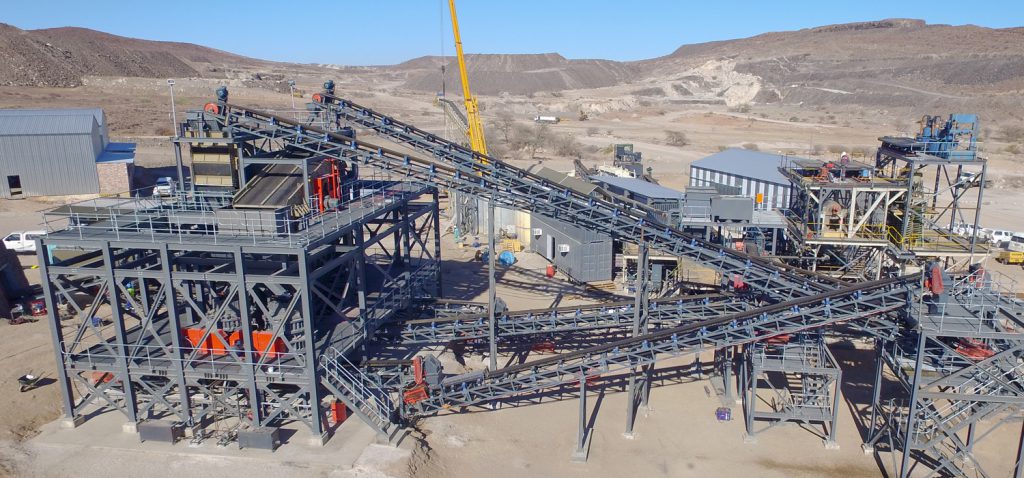SA Mining
AfriTin Eyes 10 000t Tin Concentrate Production
Given its strategy of reaching revenues in excess of $100-million in the next five years, the miner remains focused on growth through acquisition both in the country and elsewhere in Africa.
In fact the AIM-listed entity has Professor Laurence Robb, who has a seat at Oxford University and was a Wits University academic, on the board of directors to identify the next generation of tin deposits in Africa.
“We have also engaged students from the departments of geology from both institutions to map new areas of tin outcrop. The exercise serves to provide the students with both relevant work and academic experience while simultaneously providing us with an opportunity to spot potential new tin destinations,” says Viljoen.
In particular, AfriTin is sweet on the African Great Lakes region which consists of countries such as Burundi, the Democratic Republic of the Congo, Kenya, Malawi, Rwanda, Tanzania and Uganda. However the company’s interest lies in sourcing tin projects from non-conflict areas.
Market overview
Driving AfriTin’s strategy is the attractive demand-and-supply fundamentals for tin.
“Given that tin is a natural substitute for lead, it is considered a green metal. And on the back of the globe’s green drive, tin’s uses are spreading to new technologies, such as renewables, semi-conductors, electrical boards and a key component in the battery and chip revolution. We see tin as one of the metals at the forefront of the Fourth Industrial Revolution,” says Viljoen.
He cites the International Tin Association’s expectation that demand for tin could triple by 2050 and highlights tin’s “critical position to the energy revolution”, which is driven largely by emerging market opportunities for tin in lithium-ion batteries.
Viljoen considers electric vehicles as being the largest potential growth sector for tin in lithium-ion batteries together with the global touchscreen controller market which is expected to grow from $5-billion in 2016 to $15bn in 2023.
Indium tin oxide (ITO) is used in touchscreens and display technologies such as LCDs and plasma.
In addition to the burgeoning demand for tin, there is a consistent supply deficit in the world markets owing to a lack of industrial-scale tin deposit. Coupled with this supply deficit has been the closure of Chinese production plants in Yunnan (the biggest producer in the world), reduced exports from Myanmar, environmental and regulatory hurdles in Indonesia and depleting resources and grades from Latin American supply leading to a potential impending physical supply constraint.
Apart from new applications, tin remains critical to everyday life and is used extensively in electronic products (fridges, washing machines and dishwashers). Other uses include solder in electronic products and cars, tin chemicals including PVC catalysts, tinplate for packaging, lead-acid batteries and copper alloys, among others.
Uis tin mine
AfriTin’s flagship Uis tin mine in Namibia offers significant appeal given its large-scale open-pit deposit, attractive demand-supply fundamentals, the discovery of lithium in the tin-bearing pegmatite which is being investigated for potential as an additional revenue stream and the acquisition of further prospective licence areas near the historic Brandberg West mine. The miner has also signed an off-take agreement with Thailand Smelting and Refining Company for 12 months with an option to extend the agreement. Its £2.4m facility for working capital requirements which has been agreed upon with Nedbank Namibia places it in good stead.
“The Uis tin mine is one of just 6% of opencast tin operations in the world. In fact, in the 1980s, the Uis tin mine was the largest opencast hard-rock tin mine in the world. As it stands, more than 60% of tin mines in the world are underground operations associated with higher mining costs,” says Viljoen.
The AIM-listed base metals developer produced its first tin concentrate from its pilot plant in August.
AfriTin, a spin-off from the highly successful Bushveld Minerals – a vanadium-focused producer – will develop the project in two phases, with Phase 1 scheduled to ramp-up to 65t per month of concentrate by year end.
Estimated at a cost of £7m, Phase 1 will target a life of mine of 80 years.
“Phase 2, meanwhile, will leverage off the achievements and platform of Phase 1 and look to deliver a superior return on investment,” says Viljoen.
Pegged at £50m, Phase 2 “will be at least six times larger than Phase 1, producing 5000t of tin concentrate per annum”. A bankable feasibility study (BFS) for Phase 2 is scheduled to start early next year and production is earmarked for 2021.
“The next two years are extremely critical for AfriTin as it looks to complete the BFS, identify satellite pegmatites and commission Phase 2. This will help us meet our long-term objective of moving towards our 10 000t-per-year target of tin concentrate,” says Viljoen.
The Uis tin mine is a conflict-free, hard-rock tin deposit consisting of high-grade mineralised zones with mineralisation confirmed along strike and at depth.
Discussing the resource, Viljoen explains that recent data highlights that the 72mt JORC-compliant mineral resource for the V1/V2 pit is 70% bigger than that indicated by historical data owing to down dip thickening and depth.
“The ore bodies are up to 100m thick and over 500m along strike and existing pits are open-ended at depth and along strike. Concurrent exploration will target more mineralised pegmatites with low stripping ratios to maintain mining stockpiles.”
Furthermore, virgin pegmatite outcrops across the mining licence area provide huge upside exploration potential, he adds.
Mokopane tin project
The Mokopane Project is located in the Mokopane District in Limpopo, South Africa.
To date, targets have been identified on farms and exploration has been conducted on two targets, Groenfontein and Zaaiplaats, which were both historical operations for a number of decades.
“We are busy with scoping studies and exploring the best options to bring Mokopane back into production,” says Viljoen, who adds that the focus at the moment remains on ramping up the Uis tin project.






 Sign-up and receive the Business Media MAGS newsletter OR SA Mining newsletter straight to your inbox.
Sign-up and receive the Business Media MAGS newsletter OR SA Mining newsletter straight to your inbox.